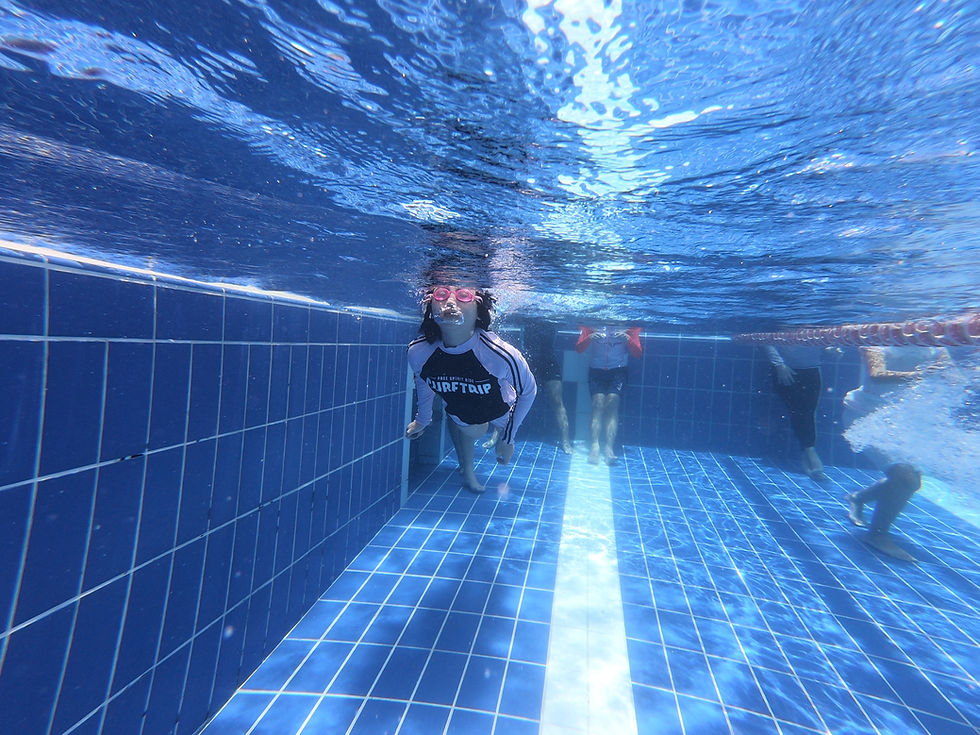How Swimming Strengthens Your Child’s Respiratory System
- SG Sink Or Swim

- May 24
- 2 min read

Swimming is widely celebrated for its full-body benefits — but one of its most powerful, often overlooked advantages is its impact on respiratory health. For children, especially those in their developmental years, regular swimming can significantly strengthen lung function, boost breathing control, and improve overall respiratory efficiency.
Whether your child swims for fun or is involved in lessons or competitive training, here’s a deep dive into how swimming helps build a stronger, healthier respiratory system.
🫁 Why Respiratory Health Matters in Kids
A strong respiratory system supports:
Efficient oxygen delivery to muscles and organs
Improved stamina and physical performance
Reduced risk of respiratory infections and asthma flare-ups
Better concentration and sleep quality
Children’s lungs and breathing muscles are still developing. Engaging in activities like swimming can enhance lung capacity and respiratory endurance early on, setting the foundation for lifelong health.
🌊 How Swimming Boosts Lung Strength in Children
1. Controlled Breathing Patterns
Swimming requires children to coordinate breathing with movement, whether it's rhythmic breaths during freestyle or timed inhales in breaststroke. This encourages:
Longer exhalations
Diaphragmatic breathing (engaging the lower lungs)
Awareness of breath control under physical stress
✅ Result: Better breath management and increased respiratory efficiency.
2. Resistance from Water Pressure
Water exerts natural pressure on the chest and abdomen. This resistance makes it harder to breathe than on land, requiring more effort from the lungs and intercostal muscles (muscles between the ribs).
✅ Result: Strengthened respiratory muscles and improved lung endurance.
3. Breath-Holding Challenges
Swimming often involves short-term breath holds (e.g., underwater glides or flip turns), which condition the lungs to work more efficiently.
✅ Result: Enhanced lung capacity and CO₂ tolerance, helping children stay calm and oxygen-efficient during other sports or physical stress.
4. Increased Oxygen Demand
Swimming is an aerobic workout. During consistent swim sessions, the body demands more oxygen to fuel muscle activity — especially as strokes become more complex.
✅ Result: Improved oxygen uptake (VO₂ max) and stronger cardiovascular-respiratory coordination.
5. Reduced Exposure to Airborne Allergens
Swimming pools are often humid environments with filtered air and water, which can be easier on children prone to asthma or seasonal allergies.
✅ Result: Fewer respiratory irritants, better breathing comfort, and greater participation confidence.
🧒 Best Swim Activities to Boost Respiratory Health in Kids
Here are beginner-friendly, lung-boosting swim activities you can include in lessons or play:
Bubble blowing games (underwater humming, blowing through a straw)
“Hold your breath” glides across shallow areas
Freestyle with long breathing patterns (e.g., breathe every 5 strokes)
Underwater swim races (short, supervised)
Vertical kicking with breath holds
💡 Start slow and focus on comfort — never push breath-holding drills beyond safe limits.
⚠️ Safety Considerations
Always supervise children around water
Avoid competitive or forced breath-holding
Work with certified instructors for children with asthma or special conditions
Consult your pediatrician before beginning any intensive exercise program
🏁 Final Thoughts
Swimming isn’t just fun and fitness — it’s a powerful tool for developing a child’s respiratory strength and efficiency. By promoting deep, rhythmic breathing and strengthening vital lung muscles, swimming can help kids breathe easier, play harder, and grow healthier.
Whether your child swims recreationally or competitively, consistent time in the water will support not only strong strokes but also strong lungs for life.





Comments